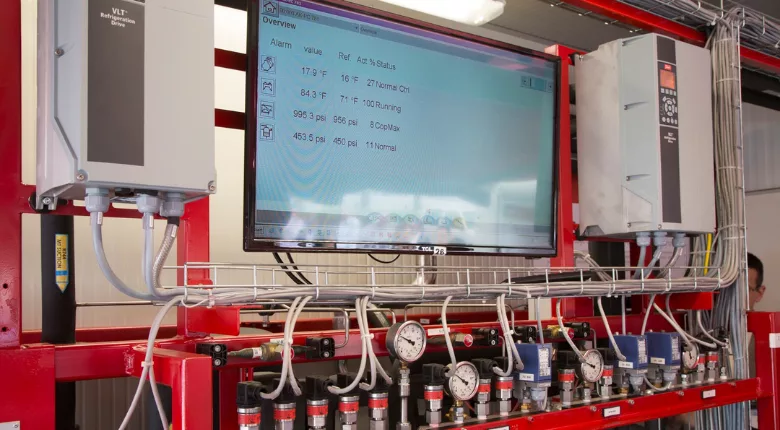BIZTRACKS
Danfoss to Host Free Virtual Training Livestreamed From Mobile CO₂ Training Unit for Refrigeration

Image provided by Danfoss
Danfoss' Mobile CO₂ Training Unit will finish its 2023 North America tour on Wednesday, September 27 at 10 A.M. ET, with its first-ever livestream training to provide installers, service technicians, and original equipment manufacturer (OEM) engineers a free opportunity to receive accessible CO₂ refrigeration systems knowledge and training virtually.
As applications for CO₂ refrigeration systems expand and urgency to transition towards a more environmentally friendly future grows, the need to understand CO₂ refrigerant technology continues to be a key differentiator for businesses across the globe. In 2023, Danfoss’ one-of-a-kind Mobile CO₂ Training Unit made its return to the U.S. for the first time since 2018, delivering the perfect blend of equipment and components for CO₂ solutions, training panels, and interactive learning modules directly to thousands of installers, service technicians, and OEM engineers across the globe that want to learn how to take full advantage of the natural refrigerant.
The informative, interactive training program, conducted by Danfoss CO₂ Champions, will help industry professionals develop the skills, proficiency and knowledge needed to utilize this go-to natural refrigerant, including the following:
- Mode 1 - Medium Temperature Transcritical
- Mode 2 - Parallel Compression
- Mode 3 - Parallel Compression/Ejectors
- CO₂ vs HFCs
- Service Tool Software (ST500)
- AK-PC782B Pack Controller
- CALM - CO₂ Adaptive Liquid Management Solution
- Evaporator Control
- Case Controller Overview
- AK-CC55 Connect Mobile App
- Ejector Overview.
The Mobile CO₂ Training Unit is outfitted with an array of solutions ranging from simple gas-bypass systems to more complex parallel compression solutions with or without heat reclaim. Moreover, the training unit introduces Danfoss’ ejector technology, which industry experts recognize as key in the evolution of transcritical CO₂ refrigeration. These ejectors have the potential to enhance the energy efficiency of their systems by up to 20 percent on the hottest days of the year, thus solving a problem that previously hindered the use of transcritical CO₂ systems in warmer climates.
Looking for quick answers on food safety topics?
Try Ask FSM, our new smart AI search tool.
Ask FSM →








